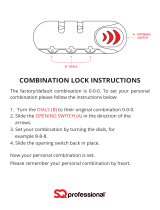_-== To Use Description "_
View f_ Press • to view photographs in order
additional _ recorded, • to view photographs in
photographs reverse order.
View photo _ Press • or • to view information
information _J about current photograph (pg. 206).
View _[] See page 218 for more information on
thumbnails the thumbnail display.
Zoom in on _ See page 220 for more information on
photograph playback zoom.
Confirmation dialog will be displayed.
Delete images "_
Press @again to delete photo.
Change To protect image, or to remove
protect 0-_ protection from protected image, press
status o_ button (pg. 221).
Return to [_
shooting / [] Monitor will turn off. Photographs
mode can be taken immediately.
Display menus IVlENU See page 245 for more information.
[] Image Review
When [On] is selected for [Image review] in the playback menu (pg. 251 ),
photographs are automatically displayed in the monitor for about 20 s
(the default setting) after shooting (because the camera is already in the
correct orientation, images are not rotated automatically during image
review). In single-frame, self-timer, and mirror-up release modes,
photographs are displayed one at a time as they are taken. In continuous
release mode, display begins when shooting ends, with the first
photograph in the current series displayed.
[] See Also
For information on choosing how long the monitor will remain on when
no operations are performed, see Custom Setting c4 ([Monitor off delay],
pg. 28O).
The roles of the multi selector buttons can be reversed, so that the • and
• buttons display other images and the • and • buttons control photo
information. See Custom Setting f3 ([Photo info/playback], pg. 301) for
details.
205























